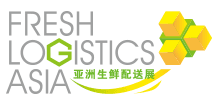- Written by: Thomas Weise
Benchmarking, the empirical algorithm performance comparison, is usually the only feasible way to find which algorithm is good for a given problem. Benchmarking consists of two steps: First, the algorithms are applied to the benchmarking problems and data is collected. Second, the collected data is evaluated. There is little guidance for the first and a lack of tool support for the second step. Researchers investigating new problems need to implement both data collection and evaluation. In our new paper "From Standardized Data Formats to Standardized Tools for Optimization Algorithm Benchmarking," we want to make the case for defining standard directory structures and file formats for the performance data and metadata of experiments with optimization algorithms. Such formats must be easy to read, write, and to incorporate into existing setups. If there are commonly accepted formats and researchers would actually use them, then this would allow more general tools to emerge. There would be real incentive for everyone who makes an evaluation tool to use the common format right away and then, maybe, publish their tool for others to use. Then, researchers then would no longer need to implement their own evaluation programs. We try to derive suitable formats by analyzing what existing tools do and what information they need. We then present a general tool, our optimizationBenchmarking.org framework, including an open source library for reading and writing data in our format. Since our framework obtains its data from a general file format, it can assess the performance of arbitrary algorithms implemented in arbitrary programming languages on arbitrary single-objective optimization problems.
- Written by: Thomas Weise
Yesterday I had the honor to attend the Chinese-German Future Forum on the Collaboration in Vocational Education [Deutsch-Chinesisches Zukunftsforum zur Zusammenarbeit in der Berufsbildung, 中德职业教育合作研讨会寄语中德职教未来发展] which was one of the parallel sessions of the [Ersten Sitzung des Hochrangigen Deutsch-Chinesischen Dialogs für den gesellschaftlich-kulturellen Austausch, 中德高级别人文交流对话机制首次会议] held at the Diaoyutai State Guesthouse [钓鱼台国宾馆] in Beijing as part of the delegation of our Hefei University [合肥学院]. The meeting was co-organized by the Central Institute for Vocational and Technical Education (CIVTE) of the Ministry of Education of China [中国教育部职业技术教育中心研究所], the China Education Association For International Exchange [中国教育国际交流协会], and the Hans-Seidel Foundation [德国汉斯·赛德尔基金会]. Hefei University can look back on a history of more than thirty years of highly successful collaboration with German institutes on vocational education, so this meeting was an important venue for us. Here you can find the conference programme in Chinese and German language.
Read more: Chinese-German Future Forum on the Collaboration in Vocational Education
- Written by: Thomas Weise
If you do not live in an English-speaking country, your language will make use of all sorts of odd characters, such as "ä", "ö", "ü", and "ß" in German or "你" and "我" in Chinese. Of course, you intend that such characters, if used in your web page, blog posts, or text files, come out correctly on the screen of your readers. In my course on Distributed Computing, there actually is a lesson on text encoding, but I can only briefly touch the topic there. Here I just want to summarize it a bit more comprehensively.

- Written by: Thomas Weise
Today, I attended the fresh logistics Asia 2017 exhibition in Shanghai, a trade show for all elements involved in the logistics of fresh food delivery. Fresh food logistics are basically logistics with added requirements regarding temperature, delay, and safe handling of the transported items. The exhibits ranged from production machinery, delivery cars, fork lifts, and big and small containers, and storage systems over appliances like freezers, fridges, cooling systems and doors, registers to food and beverage products and supply offers. Like in case of the Intertraffic China 2017 exhibition I visited about ten days ago, the focus was more on hardware, with very cool exhibits and demonstrations.
For me as a researcher in optimization and mainly interested in the planning and the operations research making logistics and supply chains efficient, it was particularly interesting to see that even at such a rather hardware- and product-oriented fair, several exhibitors focusing on digitization, data management, and optimization of the logistics aspects were present, such as 晶链通. Yet, this subject was less prominent compared to the Intermodal Asia 2017 exhibition, maybe because large-volume container transport on a global scale over a heterogeneous network of carriers makes central data keeping an absolute requirement. Optimization and planning is enabled by the availability of data, it cannot work easily with Excel sheets. This is why I think that a technological evolution will probably start with better ERP, CRM, and warehouse management software, maybe as SaaS systems, for logistics and supply-chain management. Such systems have an immediate and obvious advantage for their users, as they enforce a clear work structure and allow for central statistical analysis. Based on the data collected, it becomes possible to move towards automated planning and optimization instead of starting with the latter.
- Written by: Thomas Weise
Sometimes, I come across the need for creating temporary files in my (Java) programs. For this purpose, I usually use Java's NIO with the Path API instead of the old File API. Here I discuss how a directory for temporary files further be scoped in time with Java's try-with-resources.
Read more: A Scoped Temporary Directory and Recursive File Deletion in Java
